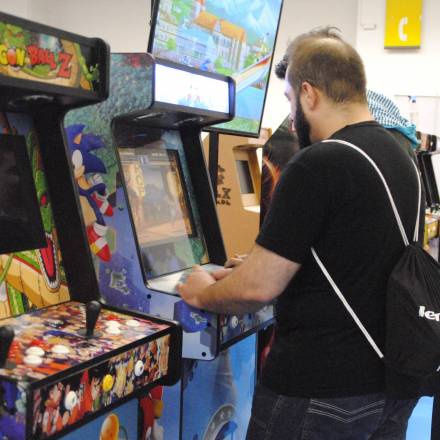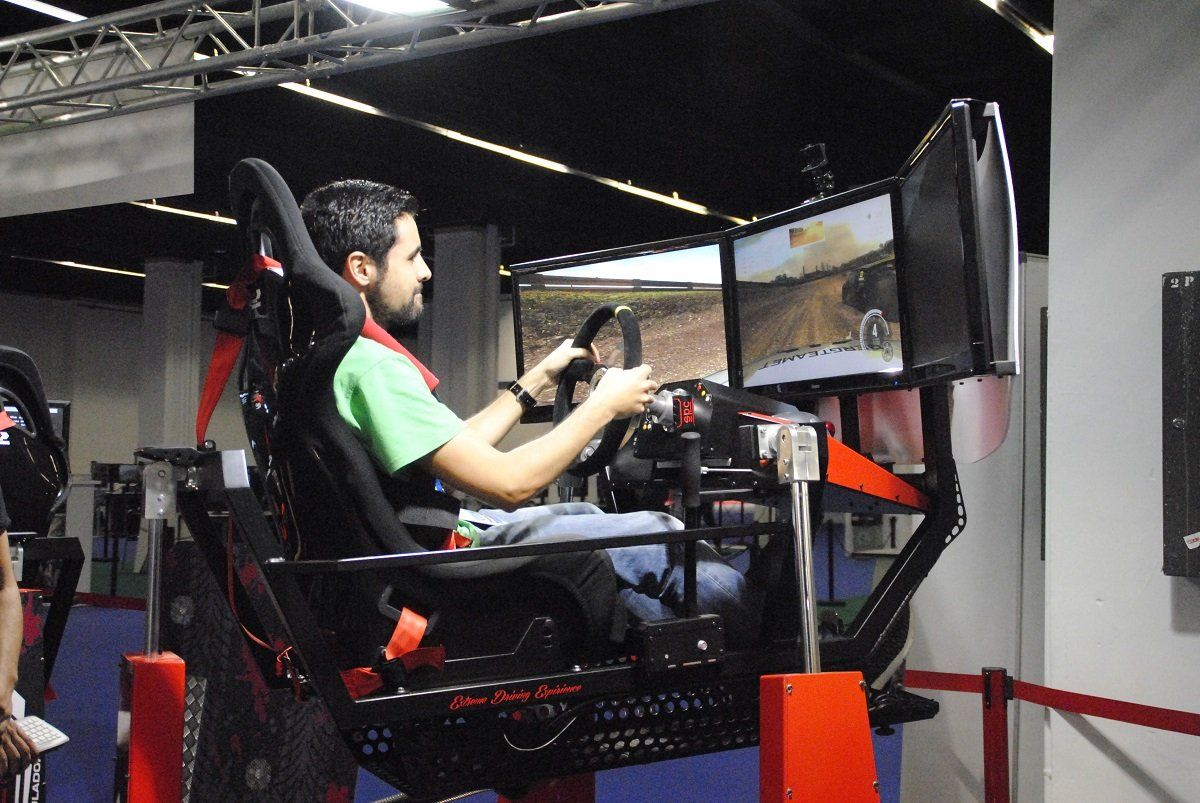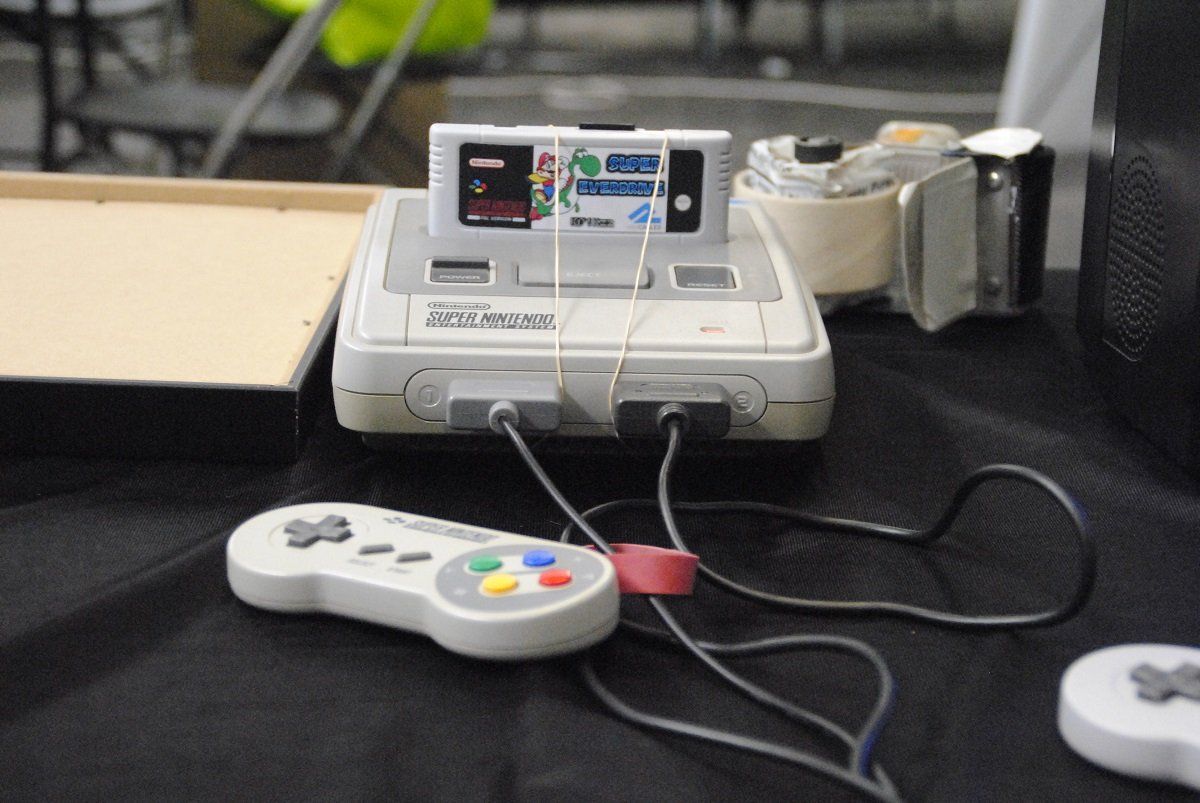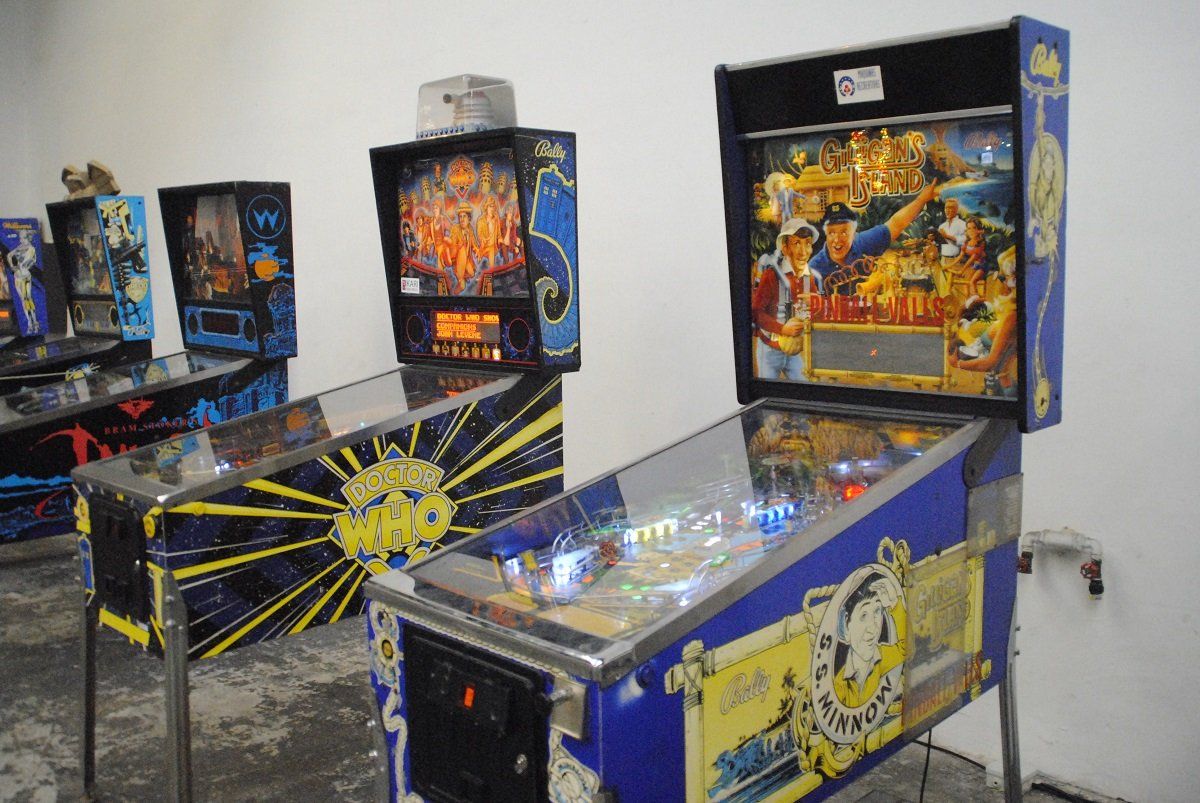
They dress casually, in tracksuit tops, t-shirts featuring their favourite video games and, above all, with large backpacks containing one their most-prized possessions: the computer. They are engineers, graphic designers, bloggers, youtubers and, in general, professionals in the videogame industry. It is a sector of the economy that is holding a key event for the first time in Barcelona, Games World.
Games have already unseated cinema and television as the main leisure choice and in Spain accounts for over a billion euros. And it is no surprise, given that the new generation is between 25 and 35 years old and is helping to boost the industry. It is the youngest segment of the population in the job market.
Jordi Casadevall is a good example. He is one of the attendees who on Thursday was moving around the fair looking for the latest novelties. He tried a couple of virtual reality goggles, the latest games by Bandai Namco and had just got out from behind the steering wheel of one of the many cars to be found in the more than 150 exhibitors' stands at the fair. "Now, at 28, I am a great fan of games, but I have to say that it was my father who got me going when I was small," he says, recalling his childhood years, "he had played on the old consoles, but it was seeing him playing all the time that has meant I am still into it". He explains it all with enthusiasm and with one eye out for the universities at the fair promoting their courses.
Young people do want to study
Jordi's case is one of many to be found in Catalan universities, some of which are also at the fair to promote their courses in multimedia and videogame studies. One of them is La Salle-URL Barcelona, which according to Emiliano Labrador, was the first to offer specific training in the field: "Some 19 or 20 years ago, when people still did not know much about multimedia, we were already training professionals. For the past three years, we have offered a specific degree course in videogame development." Labrador oversees the Masters in Multimedia Creation and works on the degree in the same field that the centre offers, and so knows that young people with Jordi's profile are common.
Everyday he sees young people between the ages of 15 and 25, like those walking around the fair, who "come demanding studies they want to do and putting pressure on us to give them what they want." Moreover, he underlines the fact that the market needs qualified professionals and that this, together with the money generated by the sector, has meant that the authorities "have got their act together". "The Catalan government has and is doing a lot to boost companies in the industry," he adds.
Barcelona, the gamer capital
Catalan companies of the size of Ubisoft, King, Social Point or Digital Legend now find themselves in a different sphere. They are large companies with strong products and sales all over the world, but they are not the only ones nourishing the Catalan industry. "It is true that if they had not needed 200 or 300 employees, we would not see this vitality, but we must not forget the indies. They make smaller and more modest video games, on smaller budgets, but make products that are just as good," argues Labrador, who points out that in the Catalan job market there is room "whether you want to work for large firms, or work for yourself."
In fact, that Catalonia should have taken Games Week –the fair's former name- from Madrid is a cause of celebration among a great many of the attendees. "Barcelona has always been creative," says Labrador, "in the 1980s it had graphic design and furniture design and now it is doing the same with video games because the talent has always been here." It is a point of view shared by the cofounder of Lince Works, Álvaro Muñoz: "Last year in Gamelab in Bilbao we were told that we are lucky to be here because a lot is going on. It is a really good place for developers, just look at the number of masters degrees and companies there are."
This small studio began at the start of 2014 and in only two and a half years has released enough games to be recognised by fans every time it goes to a new fair. It has just released a new game for the PlayStation 4 and PC called Aragami, which they want to promote at Barcelona Games World. It is an event where they can also get feedback from the fans.
Between mobile, eSports and virtual reality
Lince Works is one of the companies that does not reject consoles. Everything suggests that mobile will in a few years be the device par excellence, but Muñoz insists that in the PC and console market there is still a long way to go. "The future will always go in parallel because the publics are different. The games we make are deeper, longer and difficult, while smartphone games are aimed at micro-transactions, free-to-play or keeping the user on board," he says about the differences.
Strolling around the exhibitors, the visitor can check out the latest trends in virtual reality. On a single corridor there are at least three companies letting curious people try out their goggles. Is this the future? For Labrador, from La Salle-URL, it isn't at all: "Right now it is a novelty and is getting a lot of attention, but I think it will be difficult for it to become established because it needs a lot peripherals and has a high cost for the user."
However, a clear trend that no one doubts is here to stay is e-sport, which refers to the competition on devices between teams, individuals or users as if they were professional sports people. As might be expected, Barcelona Games World has a dedicated space for tournaments, where on Thursday it was announced that there is a new owner of the Kiyf Logitech company, which is devoted to managing teams taking part in League of Legends competitions.
"We have seen eSport grow a lot in Asia and the United States and it is now coming to Europe. There are a lot of opportunities for growth," points out Carla Prat, director of communications of the Kiyf team and employee of Seven Mila, a company that promotes sporting events. Prat says that her team is the only one in the league based in Barcelona, but she predicts good growth for the sector.
Retrobarcelona, for the nostalgic
Amid so much innovation, the most senior visitors also have their own space. Retrobarcelona reviews the past 40 years of videogame history. "We have classic machines, such as the Mega Drive, the Supernintendo, the Master System as well as the Spectrum and arcade machines in general," says the exhibition's director, Carles Garcia. Most of them are from the 1980s and 1990s, and they are the games that generate the most nostalgia among those keen to get their hands on a Sega controller again before they try out VR goggles.
Since those times, Garcia believes that the industry has not changed that much. "The games are very similar, because these set the precedent, though it is true that they used to be more difficult and more targeted at geeks; now they are more accessible in order to attract more users," he points out. What has changed, and which can be seen straight away, is the size and aesthetic. If videogame consoles used to be big, square and heavy, now they are slim, light devices. And this can also be seen in the arcade machines, as Retrobarcelona has classic machines two-metres high and other newer machines from Rex Arcade, a Sabadell company that builds new versions. "They are smaller and take up less space at home, if you would like to have one and your partner lets you!" he says jokingly.
Thursday was the first day and seemed to be a day aimed more at the curious. The busiest days will be over the weekend, when the first Barcelona pinball championship is due to take place as well as different tournaments of Mario Kart, Tekken and Street Fighter. They will also be the days when the most sales are made by shops with stands selling old consoles and cartridges, books and merchandise. According to Garcia, visitors can spend up to 200 euros on average.
For collectors it is money well-spent. Especially if we bear in mind that some of the vintage consoles on sale at the fair are more expensive than a new PlayStation 4. "This means they will not disappear," says Garcia, "these machines work with cartridges and do not have all the problems of CD readers, which always break down." While they are sure to become rarer, the director of the fair is convinced that we will continue to see gems for some time to come.